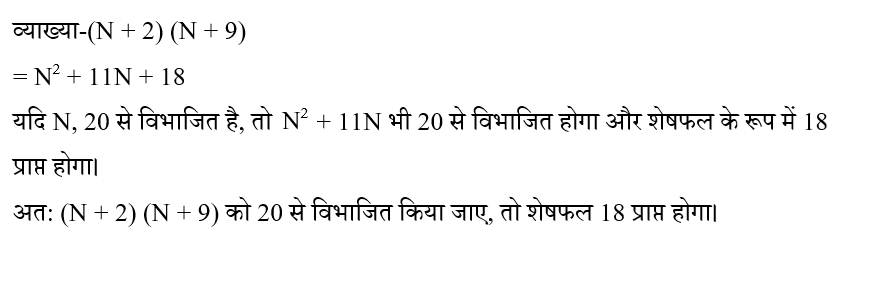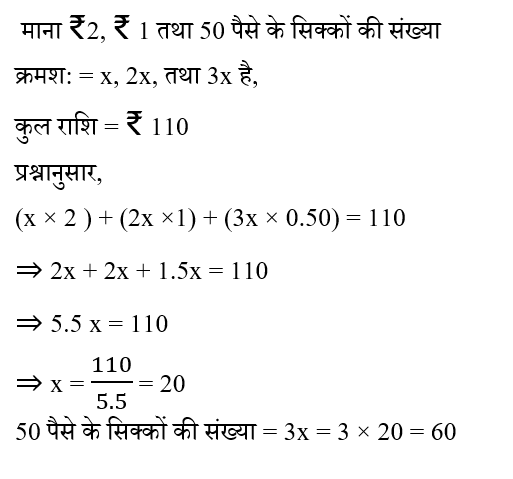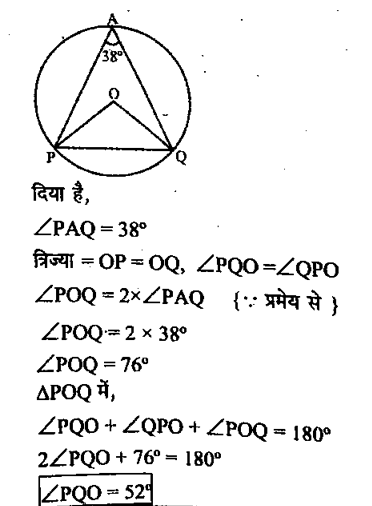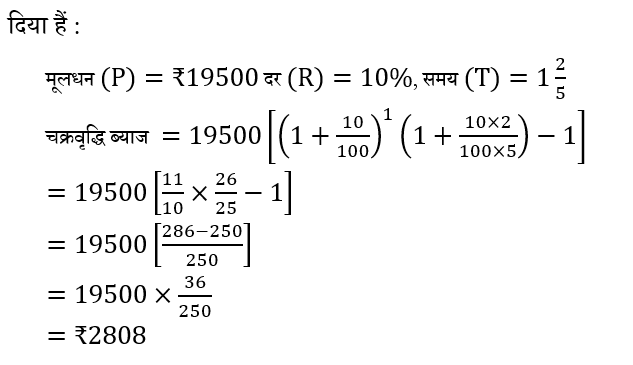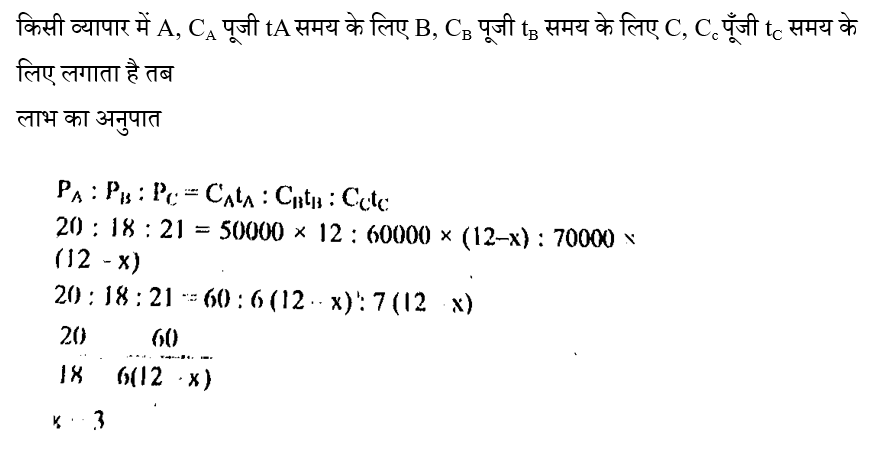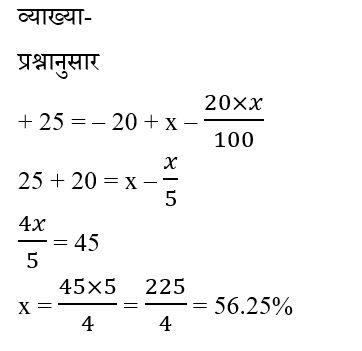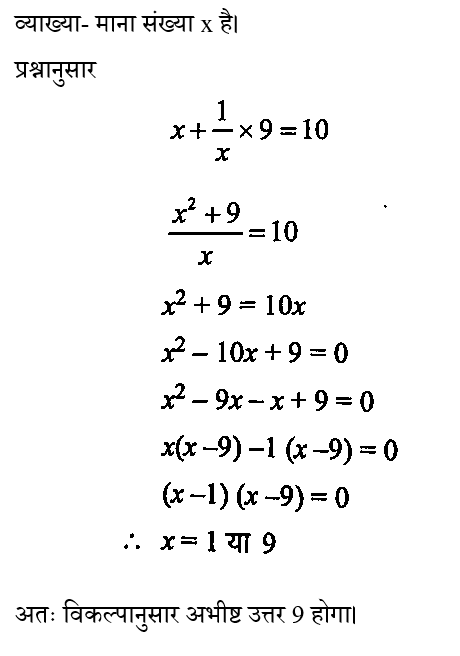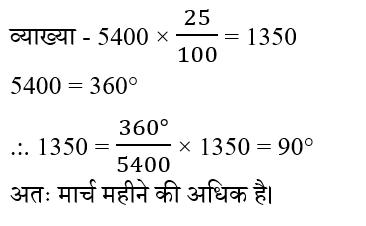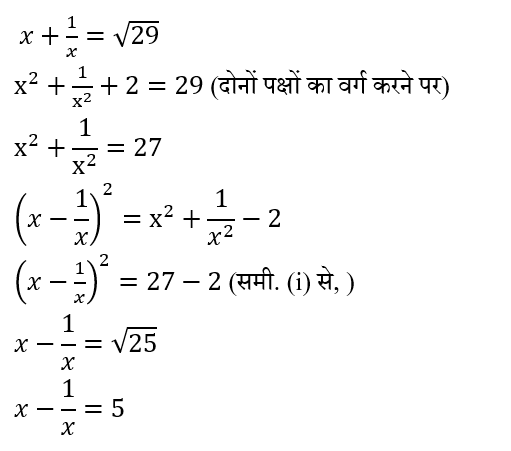Question 1:
N is a number which is divisible by 20. If (N + 2)(N + 9) is divided by 20, what will be the remainder?
N एक संख्या जो 20 से विभाजित है। यदि (N + 2) (N + 9) को 20 से विभाजित किया जाता है, तो शेषफल क्या होगा ?
Question 2:
A sum of ₹110 is in the form of ₹2, ₹1 and 50 paise coins in the ratio 1 : 2 : 3 respectively. How many 50 paise coins are there in it?
₹110 की एक राशि ₹2, ₹1 और 50 पैसे के सिक्कों के रूप में है, जिनका अनुपात क्रमश: 1 : 2 : 3 है। इसमें 50 पैसे के कितने सिक्के हैं?
Question 3:
In the given diagram, PO and OQ are the radii of the circumcircle of ∆APQ. If ∠PAQ = 38°, then what is ∠PQO?
दिए गए रेखाचित्र में, PO और OQ ∆APQ के परिवृत्त की त्रिज्याएं हैं। यदि ∠PAQ = 38° है, तो ∠PQO क्या होगा ?
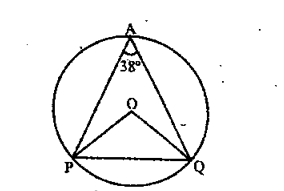
Question 4: 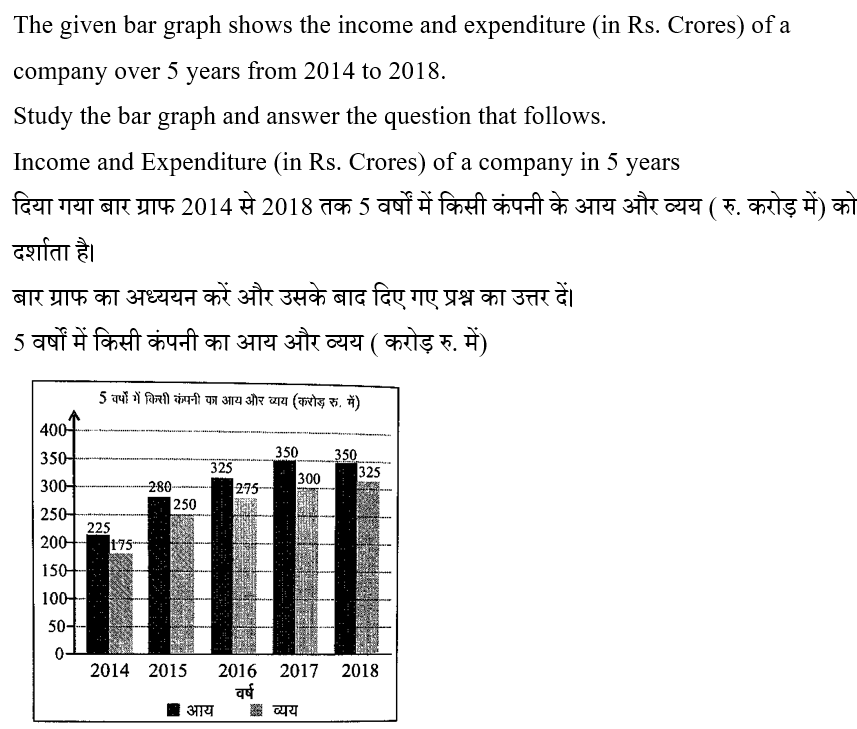

Question 5: 
Question 6:
A and B enter into a partnership by investing ₹50000 and ₹60000 respectively. After 'x' months C also joins them by investing ₹70000, B leaves the partnership 'x' months before the end of the year. If they share profits in the ratio of 20 : 18 : 21, then find the value of 'x'.
A और B क्रमश: ₹50000 और ₹60000 का निवेश करके एक साझेदारी में प्रवेश करते हैं । 'x' महीनों के बाद C भी ₹70000 निवेश करके उनके साथ जुड़ जाता है, वर्ष के अंत से 'x' महीने पहले B इस साझेदारी से निकल जाता है। यदि वे 20 : 18 : 21 के अनुपात में लाभ साझा करते हैं, तो 'x' का मान ज्ञात कीजिए ।
Question 7:
When the price of an item is reduced by 20%, its sale increases by x%. If the revenue receipt increases by 25%, then find the value of x.
एक वस्तु की कीमत 20% कम करने पर इसकी बिक्री x% बढ़ जाती है। यदि राजस्व की प्राप्ति में 25% की वृद्धि होती है, तो x का मान ज्ञात करें।
Question 8:
If the sum of a non-zero number and 9 times its reciprocal is 10, then what is that number?
एक गैर-शून्य संख्या और इसके व्युत्क्रमानुपाती के 9 गुना का योग 10 है, तो वह संख्या क्या है ?
Question 9: 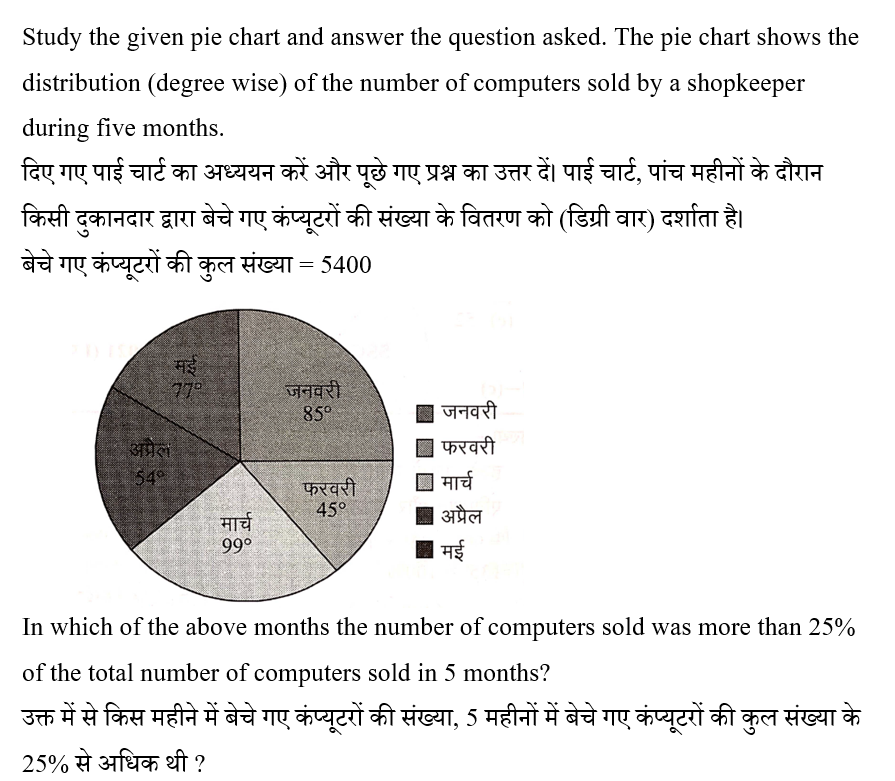
Question 10: 

